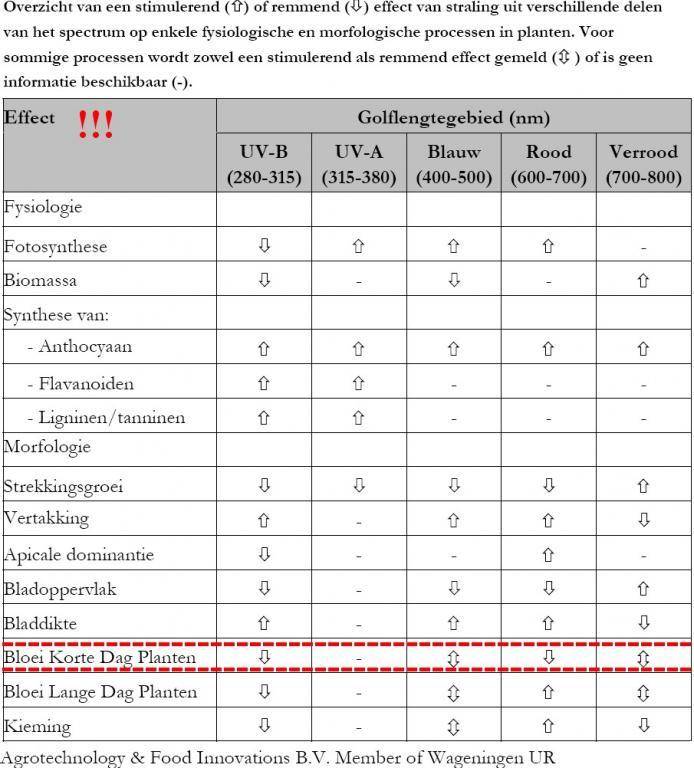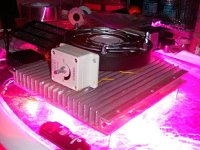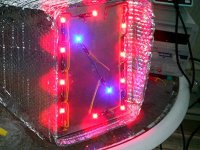knna
Member
Nice thread about the LED light, although to much red is used according to this
schedule of the agricultural university of Wageningen

Translation
Golflengte = wavelength
blauw=blue
rood=red
verrood=farred
bloei korte dagplanten=flower shortday plants
stimulerend=stimulating
remmend=inhibited
Namaste
We need more concrete info about cannabis responses than general summaries.
We are trying to find the best spectrum distribution for cannabis, and identify the possible trade offs of using some spectrum distributions vs others distributions.
And its a matter of experimenting to quantify, so we can select the best balance for our targets.
For example, about the amount of red in the spectrum distribution: how much it enhances photosynthesis? how much longer it does blomming? Is the cannabis response linear to such parameters, or behalf by sudden steps?
Thats the only way to decide if using 20, 40 60 or 80% red of the total spectrum.







